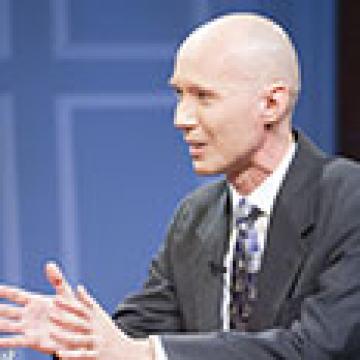Richard Nixon: Life After the Presidency
When President Richard Nixon resigned on August 9, 1974, Gerald Ford assumed the presidency, telling Americans, "Our long national nightmare is over." On September 8, President Ford pardoned Nixon of all crimes associated with the Watergate scandal. He granted, "a full, free, and absolute pardon unto Richard Nixon for all offenses against the United States which he, Richard Nixon, has committed or may have committed or taken part in during the period from January 20, 1969 through August 9, 1974."Nixon was reluctant to accept the pardon because it implied guilt but his friends and advisers warned him that any legal battle would be protracted and expensive and it would be very hard to find an impartial jury or receive a fair trial. Ford's pardon of Nixon angered many in the public who felt that Nixon should have been held accountable for any crimes he might have committed. Historians point to the pardon as a significant factor in Ford's failure to win reelection in 1976.
After leaving Washington, Nixon and his wife Pat returned to California and "La Casa Pacifica," their home in San Clemente, California. The former President was a broken man with little idea of what to do next and how to pick up his life. He soon suffered a physical setback as well. At the end of October, Nixon underwent surgery to remove a blood clot that had formed in his leg. Although the surgery was successful, Nixon went into shock because of internal bleeding and had to undergo another operation. He spent considerable time in the hospital before returning home for a long convalescence. As 1974 came to an end, according to many accounts, Nixon hit one of the lowest points of his life. Yet the man who had come back so many times before had only just begun working on his final comeback.
He first began to look for ways to recover financially. He had spent more than $1 million defending himself in various lawsuits relating to Watergate and owed back taxes to the federal government. He needed to find ways to reestablish his financial well being. First, he agreed to write his memoirs, which were sold for more than $2 million; RN: The Memoirs of Richard Nixon (1978) went on to become a best seller. He gave an interview to British television personality David Frost for $600,000. The interview aired in May 1977 to mixed reviews. The Nixons also sold their properties in Florida; all of this went a long way in paying off many of his debts.
Nixon then began tentatively to reenter to public eye. He traveled to China in 1976. Much of the international community could not understand the fuss over Watergate, and the former President was warmly received by his Chinese hosts. He made his first public speech in 1978 in a small town in Kentucky before a friendly audience, and he mostly concentrated his first post-presidential appearances on small gatherings of supporters. In 1980, the Nixons moved to New York City, which allowed them to be back in the heart of activity, and then two years later they moved to the community of Saddle River, New Jersey. He and Pat spent considerable time with their children and grandchildren.
Meanwhile, Nixon began to reclaim a place on the national scene. He dispensed his advice to all who would listen, including talking to President Jimmy Carter about normalizing relations with China in 1978. Presidents Ronald Reagan and George H. W. Bush began to consult him although they did not publicize that fact. Republicans were still wary of the public's reaction to Nixon but they were interested in his opinions about foreign affairs. He remained an acknowledged expert on foreign policy, gave countless speeches around the world, and authored several well-regarded books, including Real Peace (1983), No More Vietnams (1985), 1999: Victory without War (1988), In the Arena (1990), Seize the Moment (1992), and Beyond Peace (1994). The high-water mark in his campaign for rehabilitation was probably a 1986 Newsweek cover story, entitled, "He's Back: The Rehabilitation of Richard Nixon."After Nixon left office, he battled with the federal government over his presidential papers and tapes. Although it was custom that Presidents controlled their papers, Congress passed the Presidential Recordings and Materials Preservations Act to keep Nixon's presidential materials in the Washington area because some people were afraid the former President would destroy them. Eventually, they were stored at the National Archives in Maryland. Meanwhile, the former President and a group of his friends raised more than $20 million to establish the Richard Nixon Library and Birthplace Foundation in Yorba Linda, California. The library was not an official "presidential library." It received no federal funds and did not contain any presidential papers, just materials from his pre- and post-presidential career. When it was dedicated in 1990, former Presidents Ford and Reagan and President Bush all attended. In 2007, the Nixon Presidential Library and Museum opened in Yorba Linda as part of the federal presidential libraries system. Nixon's presidential papers and tapes are now located in both Maryland and California.
Nixon died from complications of a stroke on April 22, 1994, and his funeral drew luminaries from around the globe, including every living President. President Bill Clinton's eulogy dwelled on Nixon's great accomplishments, particularly in foreign affairs, rather than on his constitutional crimes, remarking "May the day of judging President Nixon on anything less than his entire life and career come to a close."
